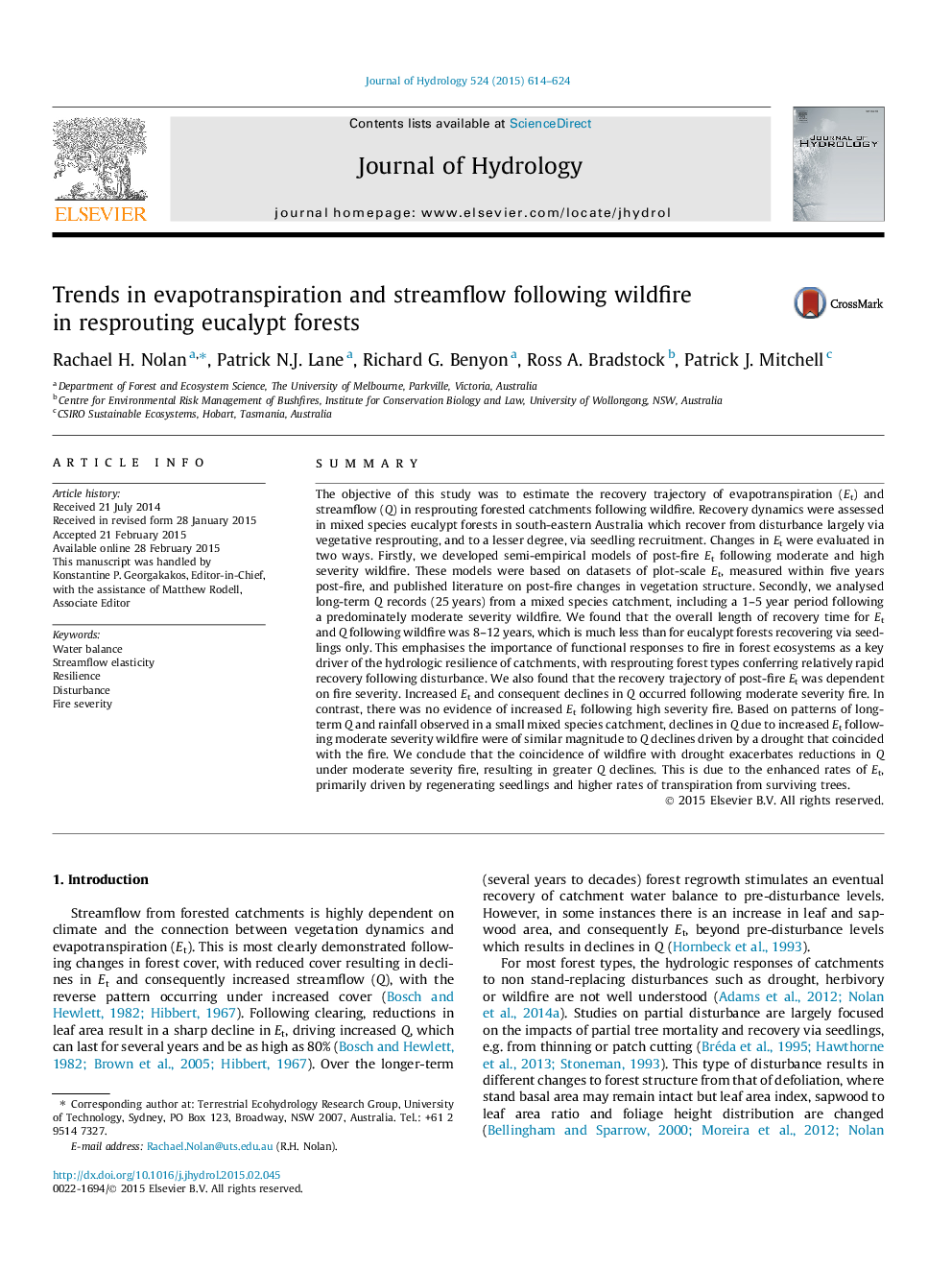| کد مقاله | کد نشریه | سال انتشار | مقاله انگلیسی | نسخه تمام متن |
|---|---|---|---|---|
| 6411480 | 1629926 | 2015 | 11 صفحه PDF | دانلود رایگان |
- We estimate the recovery trajectories of evapotranspiration in resprouting forests after fire.
- We draw on plot-scale evapotranspiration and streamflow observations.
- Recovery of evapotranspiration was much faster than for forests recovering via seedlings.
- This shows that plant functional responses to fire can drive hydrologic resilience.
- The magnitude and direction of streamflow change is dependent upon fire severity.
SummaryThe objective of this study was to estimate the recovery trajectory of evapotranspiration (Et) and streamflow (Q) in resprouting forested catchments following wildfire. Recovery dynamics were assessed in mixed species eucalypt forests in south-eastern Australia which recover from disturbance largely via vegetative resprouting, and to a lesser degree, via seedling recruitment. Changes in Et were evaluated in two ways. Firstly, we developed semi-empirical models of post-fire Et following moderate and high severity wildfire. These models were based on datasets of plot-scale Et, measured within five years post-fire, and published literature on post-fire changes in vegetation structure. Secondly, we analysed long-term Q records (25Â years) from a mixed species catchment, including a 1-5Â year period following a predominately moderate severity wildfire. We found that the overall length of recovery time for Et and Q following wildfire was 8-12Â years, which is much less than for eucalypt forests recovering via seedlings only. This emphasises the importance of functional responses to fire in forest ecosystems as a key driver of the hydrologic resilience of catchments, with resprouting forest types conferring relatively rapid recovery following disturbance. We also found that the recovery trajectory of post-fire Et was dependent on fire severity. Increased Et and consequent declines in Q occurred following moderate severity fire. In contrast, there was no evidence of increased Et following high severity fire. Based on patterns of long-term Q and rainfall observed in a small mixed species catchment, declines in Q due to increased Et following moderate severity wildfire were of similar magnitude to Q declines driven by a drought that coincided with the fire. We conclude that the coincidence of wildfire with drought exacerbates reductions in Q under moderate severity fire, resulting in greater Q declines. This is due to the enhanced rates of Et, primarily driven by regenerating seedlings and higher rates of transpiration from surviving trees.
Journal: Journal of Hydrology - Volume 524, May 2015, Pages 614-624
